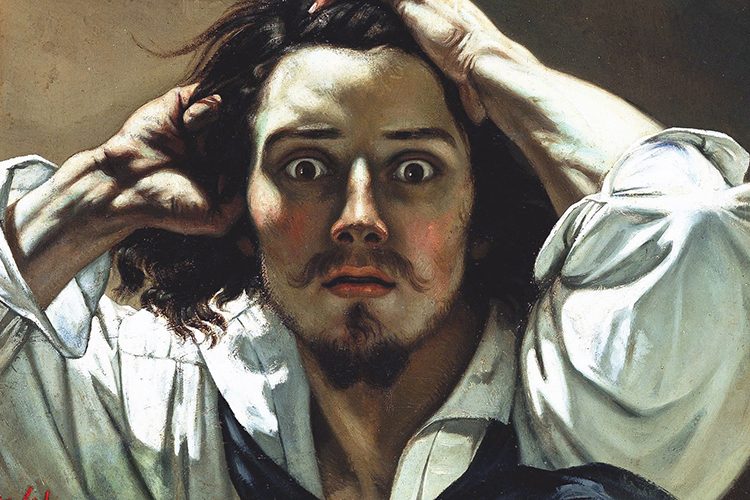What is sublime?
In everyday common use, sublime can be a noun or adjective that describes something “in awe”, “grandeur” or “impressive.” Philosophically and artistically, it is one important hallmark that signifies modernity. In the late 18th century, words like “subjectivity”, “freedom” and “spiritual” were spelled out with great confidence and sublime rose to a high status in the 19th century.
Sublime can be judgments, feelings, states of mind or responds to nature and art. In any case, one central connotation of sublime is a “sense of striving or pushing upwards against an overbearing force,” which makes sublime seem powerful in an indescribable way. This is the reason why painters and philosophers admired nature so much, and attached mysterious feelings to it. As Edmund Burke did in his “A Philosophical Enquiry into the Origin of Our Ideas of the Sublime and Beautiful,” rich vocabularies and descriptions were used to describe nature in an unprecedentedly sensational way. True, when one absorbs in the logic of one particular writer, each word naturally imprints on one’s mind like a tattoo that the reader can do nothing but agree.
Sublime can be everything and nothing at once, just like how Kant critiqued Burke, after the sensations fade this daunting question haunts our mind “is it I am actually arouse or I just want to be aroused?” This is essentially what Kant argued in his “Critique of Judgement” that sensation is the pleasure arise from the harmony between the object and cognition, and sublime is the intellectual pleasure. This is the power of judgement.
Sublime and Visual Arts
At this point, it would be rather sensible to reaffirm the Ptolemaic Revolution proposed by Kant, that human cognition and judgment is placed in the center of the universe and each of us are subjectively experiencing the external world.
However, the chemistry of sublime and art does not stop here. Art, as Hegel would say, has its own purity and deserved to be treated in a distinctive way. Therefore, art should not be a medium for artists to express or explore their inner sensations, rather, it is through the exploration of one’s inner self that brings about creation. As Deleuze quoted a phenomenological point of view in his book “Francis Bacon: The Logic of Sensation,” that “I become in the sensation and something happens through the sensation, one through the other, one in the other.”
Nature a Double-Sided Sword[1]
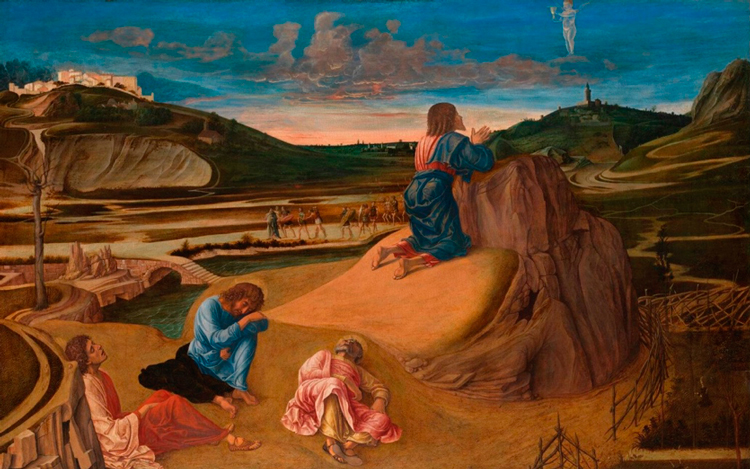
Giovanni Bellini, c.1430, The Agony in the Garden of Gethsemane, Color on wood, 81cm x 127cm | National Gallery, London, U.K.
Back in the 16th through 17th century, landscape received high religiosity as a divine creation of god. Nonetheless, landscape was still in the second last position in the hierarchy of paintings at a slightly higher position than still life paintings. Therefore, landscape was merely depicted as a backdrop for history and religious paintings and little attention was paid natural phenomena, most scenery was depicted with calmness and serenity.

Giorgione, c.1505/ 1510, The Agony in the Garden of Gethsemane, Oil on panel, 90.8cm x 110.5cm | Samuel H. Kress Collection
Landscape paintings from the Low Countries were characterized by their 2:1 ratio between sky and land.

Jacob Isaacksz. van Ruisdael, c. 1668 – c. 1670, The Windmill at Wijk bij Duurstede, Oil on canvas, 83cm x 101cm | Rijksmuseum, Amsterdam, The Netherlands
During the romantic era, painters interpret nature with their free imagination and passion. Sometimes, we’re bathed in the warm welcoming natural light; sometimes it feels as if we are in the hell of fire. Other times a little rain nurtures our corps; but it could also turn to one devastating weapon when Juno decides to strike its thunderbolt. Of course, the perfection of oil technique since Leonardo da Vinci certainly played an important part that enabled a dramatic and natural depiction of landscape in the romantic era.
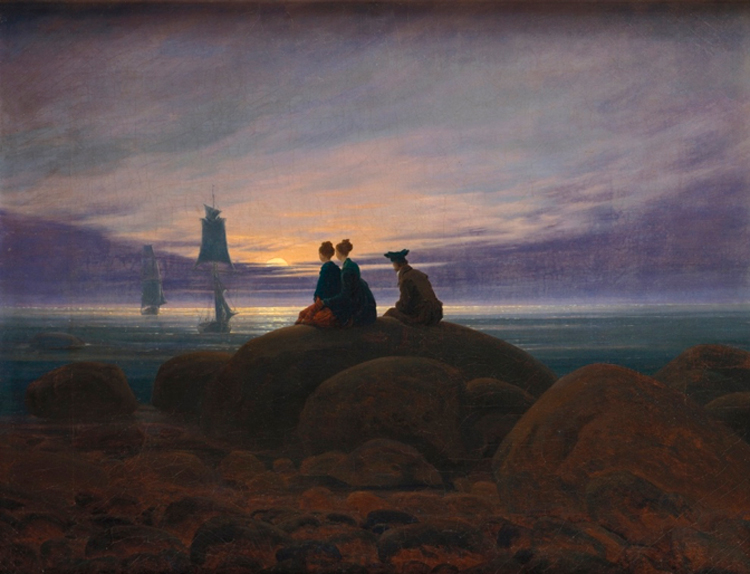
Caspar David Friedrich, 1822, Moonrise over the Sea, Oil on canvas, 55cm x 71cm | Alte Nationalgalerie, Berlin, Germany

Théodore Géricault, 1818-1819, The Raft of the Medusa, Oil on canvas, 491cm x 716cm | Louvre Museum, Paris, France
In the following piece, Turner also praised the technological advance in Britain by demonstrating the change in landscape as the steam train move in high speed.

J. M. W. Turner, 1844, Rain, Steam and Speed – The Great Western Railway, Oil on canvas, 91cm x 121.8cm | National Gallery, London, U.K.
Exotic Orientalism
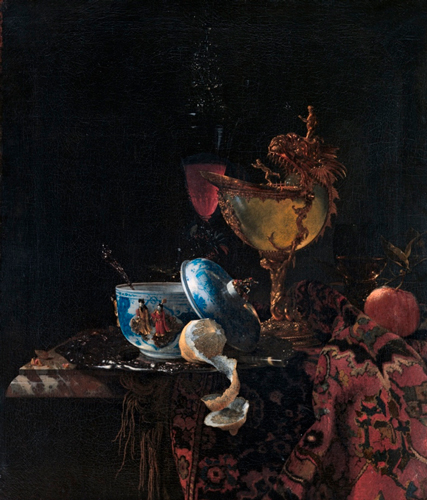
Willem Kalf, Still Life a Nautilus Cup, c. 1662, Oil on canvas, 79.4cm x 67.3cm | Museo Nacional Thyssen-Bornemisza, Madrid, Spain
It is not news that Europeans are interested in exotic cultures, this started way back in the 12th century when Italian merchants first started trading spices, silk and gold with Asia (both Eurasia and East Asia).
During the Dutch Golden Age in the 17th century, the production of Dutch still life paintings came in bulk and one sub-genre called Pronkstilleven mainly featured imported luxuries like Chinese porcelain, Japanese Sword, Turkish and Persian carpet as showmanship of the rich. In these paintings, the objects are depicted in European eyes with meticulous realism as a truthful replication of reality.
As trade and transportation technology further developed, Europeans had even higher accessibility to exotic countries like Africa and East Asia. The more they discovered, the higher their interest in other cultures and even started conducting proper studies to “investigate” these cultures based on their own. It was an era of half-excited, half-uncertain discovery of the unknown.

Eugène Delacroix, 1834, The Women of Algiers, Oil on canvas, 180cm x 229cm | Louvre Museum, Paris, France
The Power of Imagination
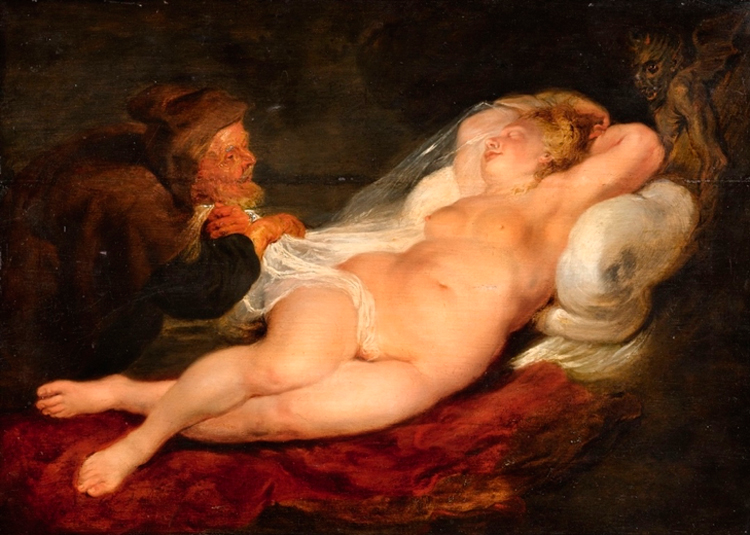
Peter Paul Rubens, 1626-1628, The Hermit and the Sleeping Angelica, Oil on canvas, 43cm x 66cm | Kunsthistorisches Museum, Vienna, Austria
Many romantic paintings depict scenes like sexual fantasy and eroticism, though this was not new in the history of oil paintings. One may recall the sensual female nudes depicted by the Flemish Baroque master Peter Paul Rubens, his female figures was one of the most famous hallmarks of early modern eroticism, characterized by their smooth and fleshy skin, plump shape, subtly deviating from the elegance and grace established since Renaissance.
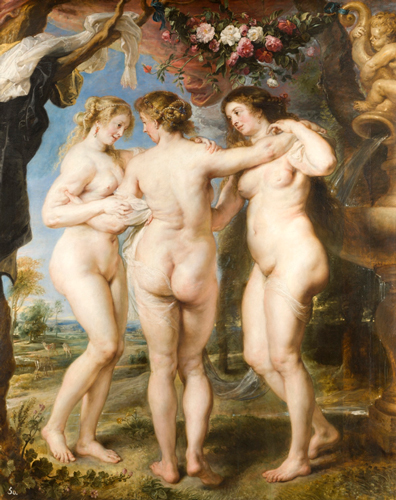
Peter Paul Rubens, 1635, The Three Graces, Oil on canvas, 221cm x 181cm | Museo del Prado, Madrid, Spain
Compared to eroticism during the romantic era in the 19th century, Rubens’ nudes seem much more explicit, fleshy yet superficial. Romantic painters had fully leveraged human imagination and brought our spiritual life to another level, to one that is entirely subjective but powerful. In these paintings, it is the subjective perception of viewers that comes into plat, it can send shiver down our spine, or it can make us feel like walking in the air.
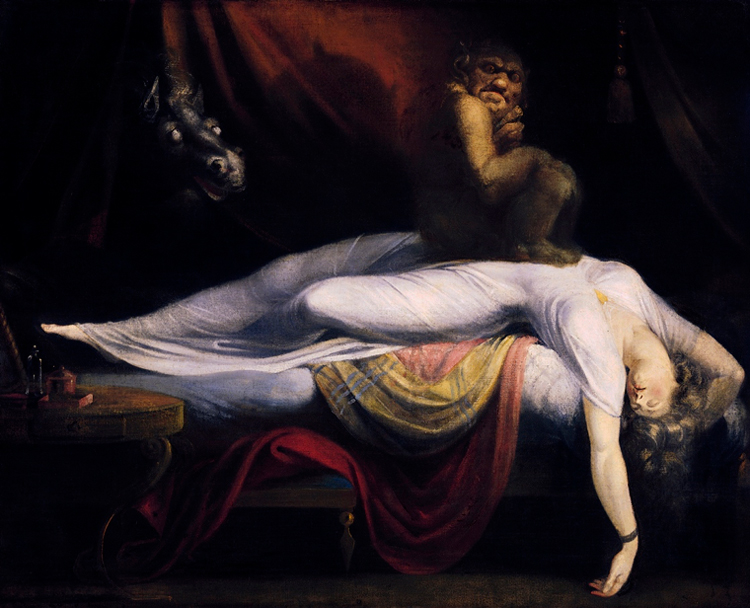
Henry Fuseli, 1781, The Nightmare, Oil on canvas, 101.6cm x 127cm | Detroit Institute of Arts, Michigan, U.S.
In this painting, Fuseli depicted a scene where the young female feels sexually aroused in her dream because of the incubus crouching on her chest. The painter had successfully presented a dreamlike and haunting erotic evocation of infatuation and obsession without any nudity. In other words, it is only through the female’s posture and the connection with the story behind the incubus that the viewers are aroused.
[1] https://www.britannica.com/art/landscape-painting#ref333319

